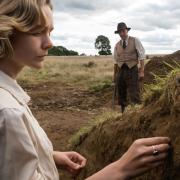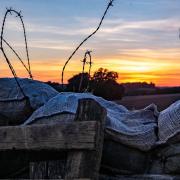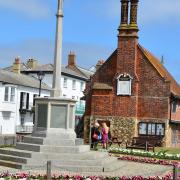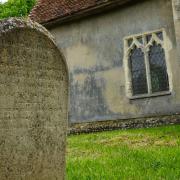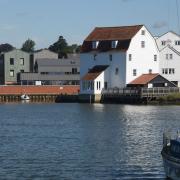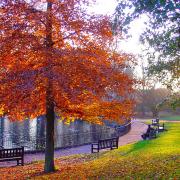Our green spaces are preciously private and community celebrations. Lindsay Want explores some of the county’s hidden gardens

Suffolk’s love of caring for gardens or special green spaces seems to go back a long way. Those great civic show pieces – the always bright and beautiful Abbey Gardens in Bury with their fine manicured lawns and the magnificently multi-layered Christchurch Park in Ipswich – are proud testimonies, deep planted in history. All around the villages of The Saints and at Barking and Mellis especially, the wildflower commons which seem to stretch for miles, sit safe in the knowledge that someone will always come and make the hay while the sun shines – it’s the way it has been for generations.
And as for Suffolk’s summer open garden festivals in half-timbered gems like Chelsworth and Lavenham, well, they now have a whole extra history of their own. Yet one sort of Suffolk garden gets overlooked more than most. They’re much frequented, much-loved, rarely on the visitor map, yet so often have time-honoured tales left untold. Take a gentle stroll through town or village and you might just happen upon a colourful wildflower mosaic and neat rows of veg in the most unexpected of places, or perhaps a small patch of green, pocket of woodland or garden corner that’s not just left, but loved and cared for by those who live nearby. Each is a splash of local colour, a quiet, future-focused show of community spirit, rooted in the past – not shouted about, but very much there to share.

Now dig this
When it comes to enjoying pride of place, fewer community gardens can beat Framlingham’s top spot. With the sports fields and Harry Potter-style halls of Framlingham College on one side, the raspberries, currants and runner beans race away down the hill towards the most magnificent Mere and imposing curtain wall castle. How anyone here or in the official town allotments below can concentrate on cultivation with views like this, is a mystery in itself. Go through the gate and there’s a pleasant mini-meadow beyond the raised borders, a homely sort of place to picnic which somehow gives the iconic panorama a different perspective, as you sit sandwiched by the fruits of people’s labours and alongside wood piles lovingly constructed for wildlife by local youngsters.
Tools of the trade

Follow the footpaths from Fram to Badingham and discover more food for thought being nurtured, not just with community spirit, but right up next to a whole potential host of them. Neatly fenced with a colourfully inviting garden gate, the set of flower, fruit and veg beds lie tucked up close to the gravestones in the churchyard. Take a pew and the tools of the gardening (and grave-digging) trade are firmly by your side – a spade, edger and trowel, built into the back of the bench. It’s a peaceful place to pause for thought and one that’s definitely celebrating nature and new life as it pushes up the daisies. With the exception of Walsham-le-Willows – that strangely French-sounding Mid-Suffolk spot famed for its open garden festival, orchid walk and fantastically floral 20th century stained glass windows – it’s rare to find a Suffolk church which embraces gardening with such gusto.
Old garden ways
At Chediston near Halesworth churchyard grounds find themselves deeply dissected by a driveway down to houses and the village hall. In Rumburgh, there’s an enclosed private-garden-style green and moat to negotiate to access fortress-like St Michaels. History explains it all away as an old priory community site, but in Cookley the boundaries couldn’t be clearer – nor more quaintly clouded by time. Here signs to the church lead you right up the garden path – through a member of the community’s personal cottage garden, past their back door and out the other side. Chelsworth boasts a similar walk-though affair, with church access down the sweeping driveway of The Grange highlighted by the tongue-in-cheek little Rue de l’Eglise sign on the wall of the rambling, roses-round-the-door, 17th century pile.

God’s own gardens
But churchyards can be real gardens all in their own right too. Detour down Turn Lane in Woodbridge to discover a wonderfully peaceful pocket of walled garden, the burial grounds of the old neighbouring Quakers Meeting House. Throughout Suffolk, country churchyards have been encouraged to go back to nature, often aided by local school children like at St Peters Spexhall.

Bustling with bugs, bees and butterflies and wild with small scabious and pyramidal orchids, Coddenham churchyard has to be one of Suffolk’s finest. It’s all thanks not just to the chalky soil, but to the strict late summer cutting and raking management regime that’s lovingly undertaken by the village community. Mindful local folk, they even rallied to purchase nearby Broom Hill in 1988 and created a delightful natural history trail around the woodland home of beech trees and bluebells, spindle, small copper butterflies, slow worms and woodpeckers.
Shed-loads of historic finds
Once you’re accustomed to spotting these green and cared for community spaces, it seems that Suffolk simply lays it on with a trowel. There’s Mendlesham’s Vicarage Plantation with its meadows and 450-year-old oak, Stoke by Nayland’s old cherry orchard and Polstead’s abandoned allotment, now gently managed for amphibians and wriggling reptiles. Groton celebrates its American links and historic mulberry tree in style, with Groton Croft designated a place of quiet enjoyment in perpetuity, whilst Bildeston remembers a mysterious royal connection in the mellow community meadows and marshland of Kings Pightle.

Signs of the times
Suffolk has so many places where the past still tries to peek through. It’s enough to make you stop in your tracks and think, to feel the past in the nature around you and to reflect how a community has continued to care so much, so future generations can share what we have.





